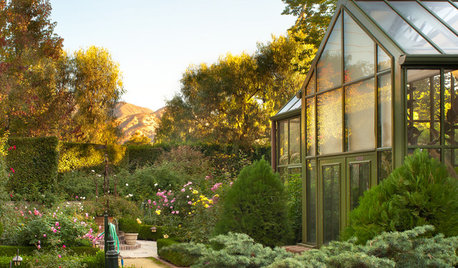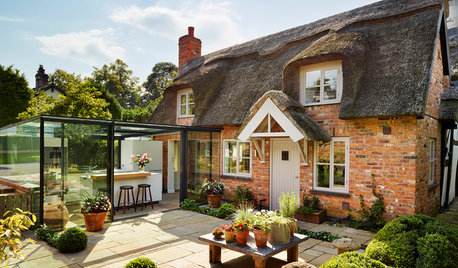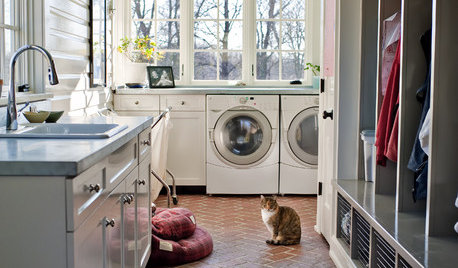How hot will this greenhouse get?
shimana
13 years ago
Related Stories

GREENHOUSESGreenhouses Bring Gardens in From the Cold
Get a jump start on summer plantings even if spring chills linger with a greenhouse or cold frames in your backyard
Full Story
HOUSEPLANTSHow to Grow Orchids Indoors
Orchids are the exotic aristocrats of the flower world and can make themselves comfortable in almost any home
Full Story
ORANGEOrange: Still Hot, Hot, Hot
Get fired up to bring in more orange with energizing paint, furnishings, rugs and accessories
Full Story
HOMES AROUND THE WORLDStorybook Cottage Gets an All-Glass Kitchen
A showstopping addition to a traditional thatched cottage houses a contemporary kitchen
Full Story
GARDENING GUIDESGet on a Composting Kick (Hello, Free Fertilizer!)
Quit shelling out for pricey substitutes that aren’t even as good. Here’s how to give your soil the best while lightening your trash load
Full Story
SMALL SPACESGetting a Roommate? Ideas for Making Shared Spaces More Comfortable
Here are tips and tricks for dividing your space so everyone gets the privacy they need
Full Story
LAUNDRY ROOMSGet More From a Multipurpose Laundry Room
Laundry plus bill paying? Sign us up. Plus a potting area? We dig it. See how multiuse laundry rooms work harder and smarter for you
Full Story
PRODUCT PICKSGuest Picks: Get Enamored of Kitchen Enamelware
Try these modern and vintage pieces coated in enamel for durability and beauty in your kitchen or on the table
Full Story
DECORATING GUIDESDecorate With Intention: Get Your Home Office Right
Help personality and productivity team up in a home office for a win-win situation
Full Story
GARDENING GUIDESSeeds or Seedlings? How to Get Your Garden Started
Growing delicious herbs and vegetables starts with knowing your goals and when you want to plant
Full Story






shimanaOriginal Author
kudzu9
Related Professionals
Ballwin Landscape Architects & Landscape Designers · Forest Acres Landscape Architects & Landscape Designers · Canton Landscape Contractors · Milford Landscape Contractors · Fort Hunt Landscape Contractors · Fort Mill Landscape Contractors · Kaysville Landscape Contractors · Live Oak Landscape Contractors · Mercedes Landscape Contractors · Morrisville Landscape Contractors · Pacifica Landscape Contractors · Yuba City Landscape Contractors · Bel Air Solar Energy Systems · Santa Maria Solar Energy Systems · Eden Prairie Solar Energy SystemsshimanaOriginal Author
kudzu9
shimanaOriginal Author
penfold2
shimanaOriginal Author
calliope
kudzu9
shimanaOriginal Author
shimanaOriginal Author
kudzu9
shimanaOriginal Author
shimanaOriginal Author